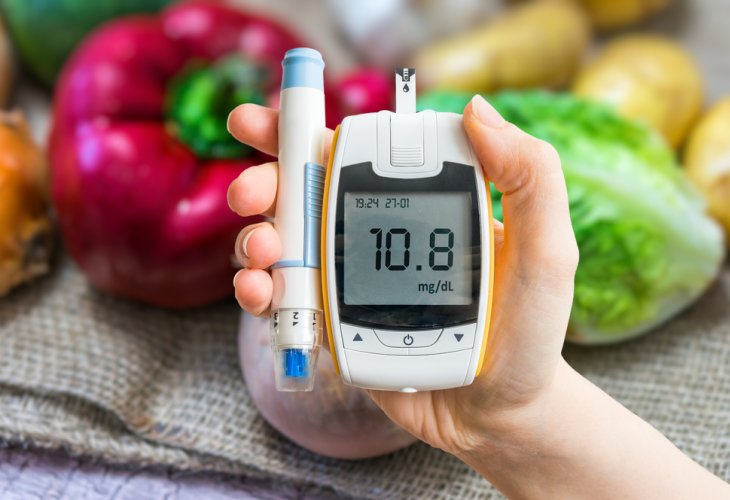Navigating Gestational Diabetes: Reducing Your Risk of Type 2
Gestational diabetes often resolves after childbirth but significantly increases your risk for future diabetes. Here's how you can lower that risk.
 (Photo: shutterstock)
(Photo: shutterstock)Gestational diabetes is a form of diabetes that develops during pregnancy in women who previously had normal carbohydrate metabolism.
Potential mechanisms behind the development of gestational diabetes include increased production and secretion of placental hormones, genetic factors, and weight gain in pregnant women who are overweight or obese.
These mechanisms lead to insulin resistance and create a heightened need for insulin, a hormone produced by beta cells in the pancreas that allows cells to absorb glucose for energy use.
Gestational diabetes is typically screened for between 24 and 28 weeks of pregnancy. If a woman has additional risk factors for diabetes or her doctor has concerns, testing may occur earlier in the pregnancy.
Gestational Diabetes vs. Type 2 Diabetes
About 50% of women who experience gestational diabetes are diagnosed with type 2 diabetes later in life. However, by adopting healthier lifestyle choices, you can reduce the likelihood of developing it.
Why are you at risk for type 2 diabetes after gestational diabetes? Gestational diabetes develops due to existing insulin resistance that increases as pregnancy progresses in women predisposed or with dysfunctional beta cells.
This dysfunction can worsen over time, potentially leading to type 2 diabetes later. The risk of developing gestational diabetes increases with each pregnancy, and thus the risk of later developing type 2 diabetes may also rise with each pregnancy.
How to Reduce Your Risk of Developing Type 2 Diabetes
- Maintain a healthy weight. Being overweight increases the risk of type 2 diabetes, as well as high blood pressure and elevated blood cholesterol levels. Consult with your diabetes clinic team and a specialized dietitian about achieving a healthy weight for you, implementing beneficial dietary changes, incorporating regular physical activity, and adopting a more active lifestyle overall.
- Adopt a healthy diet. A healthy diet is essential for maintaining a proper weight. Include essential nutrients such as non-starchy vegetables like bell peppers, spinach, broccoli, fruits, lean proteins like chicken, tofu, eggs, fish, whole grains - brown rice, oats, legumes like beans and lentils, and drink water instead of juices and sugary drinks. Also, avoid processed foods: packaged foods, processed meats, fast food, sweets high in trans fats: margarine, many fried foods, baked goods, sugary drinks: fruit juices, sodas, and alcohol.
- Monitor your sugar levels. It's important to be aware of your blood sugar responses. If you know you're at a higher risk of developing type 2 diabetes due to gestational diabetes, talk with your doctor and dietitian about periodic monitoring of sugar levels, at least once a year. You might use continuous glucose monitoring technology to see how different foods and activities affect your sugar levels. Advanced technology allows you to scan a sensor attached to your arm for 14 days, providing data on your smartphone app, which you can share with your doctor or dietitian.
Knowing your blood sugar levels can help you plan meals that match your sugar levels and help you stay active and monitored consistently.
- Engage in physical activity. Exercise is a natural and effective way to lower blood sugar levels. It is important to engage in aerobic exercise while keeping your heart rate within moderate intensity targets (individualized goals) for at least two and a half hours a week and also include muscle-strengthening activities like using weights or resistance bands.
- Breastfeed your baby. Breastfeeding reduces the risk of type 2 diabetes for both the mother and the child. Additionally, it lowers the child's risk of becoming overweight or obese later in life.
Although breastfeeding may reduce the risk of developing type 2 diabetes, it can sometimes be challenging. If you wish to breastfeed but encounter difficulties, inform your healthcare team. They can assist you in overcoming challenges or refer you to a lactation consultant who can work with you on this.
When to Seek Diabetes Clinic Follow-up?
It is recommended to have a glucose tolerance test about 4 to 12 weeks postpartum. In addition, a fasting blood glucose test and/or Hba1c should be done one to three years after a pregnancy with gestational diabetes, even if postpartum screening results were normal.
If you notice any symptoms of diabetes or are concerned about your risk of type 2 diabetes post childbirth, see your healthcare provider. Discuss your concerns and what you can do to help reduce your risk of developing type 2 diabetes in the future.
Conclusion
Gestational diabetes can increase the risk of developing type 2 diabetes later in life. While almost half of those with gestational diabetes are diagnosed with type 2 diabetes eventually, there are several things you can do to reduce your risk or delay its onset.
Adopting healthy eating habits, engaging in regular physical activity, breastfeeding for at least two months if possible, and maintaining a healthy weight can all help lower the risk of diabetes.
Dr. Mariana Yaron, Specialist in Internal Medicine and Endocrinology at the DMC for Diabetes Care and the Institute of Endocrinology, Metabolism and Hypertension at Ichilov Medical Center Tel Aviv

